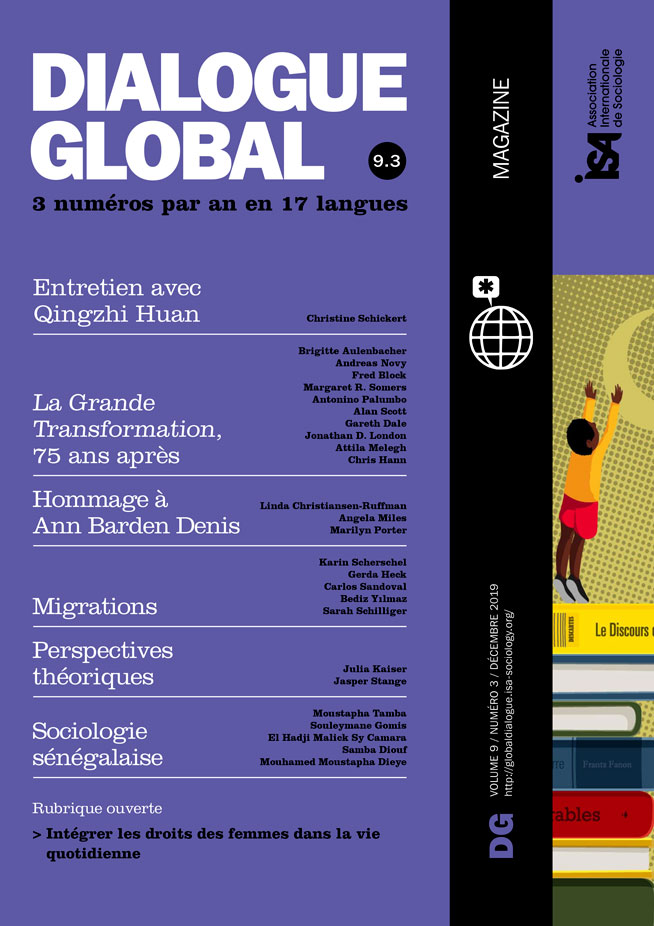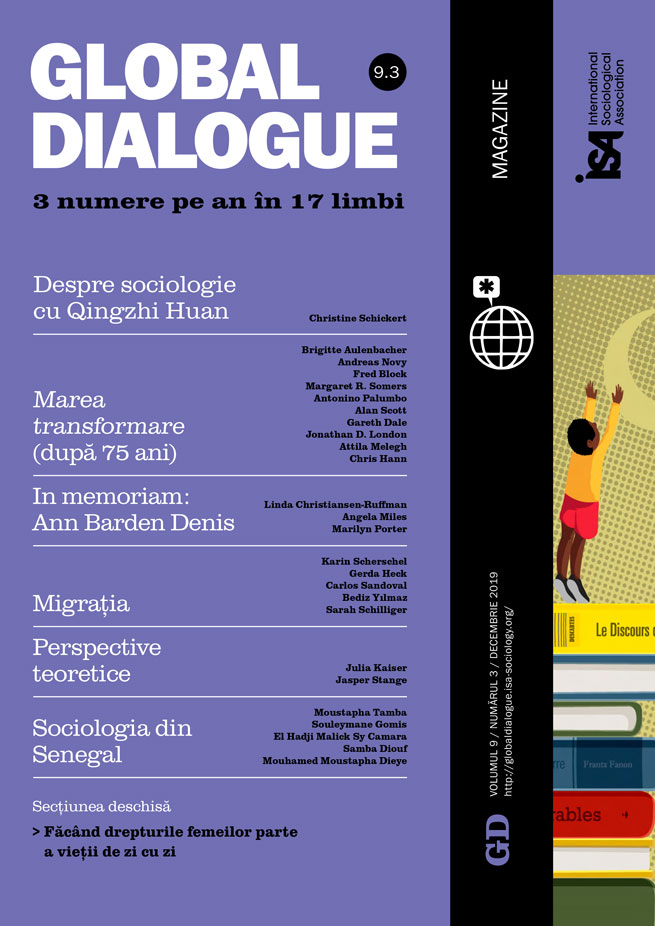The world-scale expansion and deepening of markets and market relations rank among the most transformative developments of our times. We can refer to these processes by way of a generic if inelegant neologism – marketization. Accelerated processes of marketization that have taken hold globally in recent decades are deeply “Polanyian,” reflecting both the dialectic of market expansion and habitation and deliberate political strategies of social transformation pursued by elite political actors intent on ordering social life to serve specific interests and instrumental goals. That said, the ways in which marketization has unfolded, the local responses it has elicited, and its effects on welfare and inequality have varied widely across and within world regions.
Globally, marketization has been associated with increased trade and investment, industrialization and financialization, capital accumulation on a vast scale, and attendant if uneven growth in incomes and wealth; but also with surging inequality, widespread and systemic economic insecurity, and ecological catastrophe. All of this has been permitted and accelerated by the broad triumph of varieties of capitalist interests intent on making the world safe for accumulation, at whatever cost. Around the world, the acceleration of marketization has gone hand in hand with the diffusion of corrupt practices committed under the cover of “market friendly” principles. This has led to the development of increasingly globalized but politically unaccountable accumulation regimes that generate wealth but also increase inequality, by sustaining economic insecurity and eliminable suffering even as average incomes rise and consumption rise.
But is the situation all that bad? After all, under marketization the world has grown richer, especially in East Asia, understood here as the 20 or so countries between Japan and Indonesia. An exploration of the dynamics of marketization and attendant dynamics in East Asia can contribute to a Polanyian analysis of our times.
The “double movement” in East Asia
Among the most widely cited data regarding the last three decades of marketization are those that highlight its contribution to improving living standards in the developing world, particularly in East Asia. According to the World Bank, between 1990 and 2016 the share of East Asia’s population living in “extreme poverty” declined from over 60% to less than 3%. However, these particular figures do not include the comparatively poorer and slower-growing market societies of Southeast Asia. And they are based on dubiously low poverty lines and representations of progress that serve dominant market-promoting interests. Be that as it may and however varied, the regional trend is clear. Processes of marketization in high-, middle-, and lower-income countries of East Asia have facilitated growth and improved living standards as well as increasing inequalities and sometimes shocking levels of exploitation. But marketizing East Asia also reflects elements of a Polanyian “double movement.”
A particularly intriguing aspect of the contemporary world market is that while its expansion has been facilitated by the hegemony of neoliberal ideas and interests (Dale, 2012), its advance has been accompanied by rapid increases in the scale and array of social policies across the world’s middle- and low-income countries. Rather than a counter-movement, the expansion of social policies across middle- and low-income countries that has attended marketization reflects the world-scale emplacement and institutionalization of globalizing market societies or social orders, respectively shaped by social relational and institutional attributes specific to each country.
In East Asia, the scale, scope, speed, and localized complexity of these processes has been particularly impressive, occurring against a backdrop of combined and uneven development. Across the region, the scale and scope of education, health, and social protection systems has expanded greatly as has public and private spending in these fields. In Korea and Taiwan, and even in Thailand, Indonesia, and the Philippines, social policy expansion has been accelerated by electoral incentives that reward elites promising to expand social protection. In comparatively wealthier Singapore, Hong Kong, and Malaysia, undemocratic states have rolled out education, health, and social protection services on an impressive scale, albeit in stratified ways that needlessly sustain poverty. In China and Vietnam, nominally anti-capitalist communist parties have instituted market societies exhibiting deeply authoritarian corporatist political frameworks that have delivered rapid economic growth and a basic floor of services for increasing shares of their populations, even as access to services beyond a basic level requires political and economic capital. Even Cambodia, Laos, and Myanmar exhibit expanding social policy suites.
Debating the nature of the double movement
Viewed globally, some take developments in East Asia as evidence of a genuine de-commodifying Polanyian double movement, in which the ongoing integration of late-industrialized East Asian societies into the expanding world market is accompanied by the rollout of state social policies aiming to protect populations from the vicissitudes of domestic and world markets while also supporting the development of capabilities necessary to compete and achieve upward mobility within them. Addressing the global expansion of social policy, Harris and Scully aver that commodification in the global South long predated neoliberalism and that, despite neoliberalism’s emphasis on developing and expanding the role of markets, its advance has obscured “a tangible shift toward the de-commodification of political economic life.” Indeed, the ILO reports that by 2019 roughly half of the world’s population is covered by at least one social benefit.
Sceptics of social policy expansion in East Asia detect a distinctively neoliberal and even fake Polanyian double movement, one that takes East Asians away from principles of universalism and decommodification and toward modes of governance and market citizenship that insulate market accumulation from democratic mechanisms. This neoliberal double movement reflects an assumption that welfare is best promoted and determined within and through the market, to the point where even social policies themselves promote the logics of the market economy. Surging inequalities and the broad commercialization and stratification of services observed in the region lend support to this view. Indeed, state social policies in the region have become major sites of capital accumulation.
What, then, are we to make of East Asia’s great transformation, which has been associated with significant if highly uneven improvements in living standards, the broad subordination of populations to market societies constructed and maintained to service elite interests, but also rising incomes and significant expansions in the scale and scope of social policy?
Instituting within social orders
Grasping the significance of East Asia’s transformation requires an analysis of the East Asian countries as social orders and, with it, deep explorations of their dynamic social relational and institutional attributes. Only in Korea and Taiwan do we observe even hints of gestures at a genuine re-embedding of the market along the lines Polanyi envisioned. In China and Vietnam, the double movement has occurred within the consolidation of market-Leninist orders. Across the region, social policies, like markets, have developed within and been routed through prevailing power relations. If there is a broad trend, it is that East Asian elites have instituted social orders and varieties of market citizenship characterized by weakly universalist social policies that extend a more or less adequate basic floor of services but make access to services beyond that highly contingent on pay-as-you-go principles and political connections. In East Asia, then, significant improvements in living standards, mass consumption, and consumerism, and expanding social policies amid increasing inequality, sustained economic insecurity, and ecological catastrophe do indeed represent a great transformation, albeit not of the sort that Polanyi envisioned and others might still hope for.
Jonathan D. London, Leiden University, The Netherlands <j.d.london@hum.leidenuniv.nl>






















